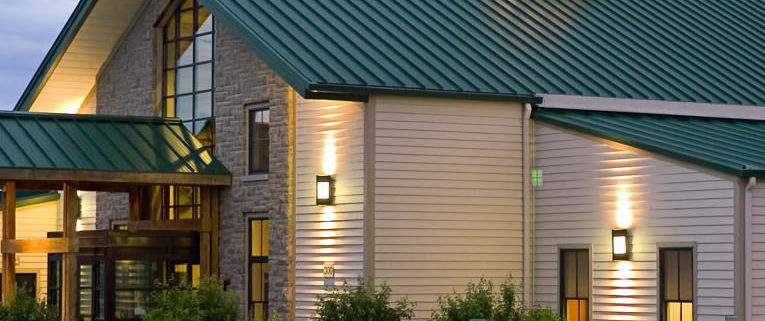Your roof won’t last forever. In fact, asphalt roofs have a lifespan of about ten years, and even standing-seam metal roofs might need replacing after 25 years.
Fortunately, commercial roof repair and regular roof maintenance can help keep your roof in good condition, because, often by the time you notice you need a repair, the damage may already be done.
Bi-annual roof maintenance plans help you stay on top of any issues before they get out of control. Read on as we take a look at what a regular maintenance program takes into account.
Check Inside
Before you even take a look at the roof, check the interior of your building.
You may be able to spot signs of leaks or water damage. Look for dark stains or discoloration on the ceilings of the rooms directly beneath your roof. If you have mold growing on your ceilings or walls, it is an absolute indication of additional moisture from a compromised area on your roof.
But, even if you don’t see any obvious signs of roof issues on the inside of your building, it doesn’t mean that issues don’t exist. An interior inspection is not enough to give your roof the all-clear!
That’s why TEMA Roofing puts such places such high importance on regular roof maintenance. Our preventative maintenance program is a realistic and fiscally responsible way to manage costs and ensure that your investment will last and your warranties will remain intact.
The TEMA Roofing maintenance program uses a 40-point inspection that includes some of the common issues listed below.
Debris Removal
Fall and winter are the worst times of the year for falling debris. Branches and leaves can cause damage or block channels and need to be cleared regularly. Preventative maintenance should be scheduled at least twice a year and after every major storm.
Blocked drains (due to excessive debris) can prevent water from draining correctly, which leads to standing water (and can eventually lead to a major leak or worse).
Standing Water on Flat Roofs
If you have pools of standing water on your roof, major problems may be in your future. The longer water stays in one place on your roof the more chance it has to cause damage.
Standing water is usually fairly easy to spot if you’ve had recent rainfall. Even if there is no visible standing water following a dry period, areas of the roof may be discolored, which is a sign of previous pooling.
If standing water is present, those areas need to be addressed as soon as possible.
Roof Drain and Flashing Inspection
Drains are crucial for ensuring that water doesn’t remain on your roof. If these get blocked with debris, then water is unable to drain away and will start to build-up on your roof.
Once water starts to build, you are far more likely to have additional problems. Even if there are no obvious blockages on your roof, make sure that your downspouts are running freely as there may be debris caught inside them.
Flashing is another material that helps direct water away from certain areas of your roof. If your roof flashing is damaged, it will not be able to do its job correctly and could be the underlying cause of water infiltration.
A quality commercial roof maintenance program will carefully inspect your flashing to spot issues before they become a major problem.
Locate and Repair Cracks/Punctures
Another problem with falling debris is that it can cause cracks or tears in the surface of your roof.
Once debris has been cleared, the roofing material will require close inspection, looking for any obvious cracks or tears. (If you’ve noticed signs of water ingress during your interior inspection, then this may be the cause.)
Water can travel unexpected distances, so keep in mind that a crack or puncture on one side of your roof could (very possible) cause a leak to develop on the opposite side of your building!
Check Roof Edge for Deterioration
One of the places where damage can most easily occur is that the edge of your roof. And, unfortunately, sharp angles will inevitably put your roofing material under greater stress, which can make it more likely to fail.
TEMA carefully inspects all edges of your roof, paying close attention to the seals. If damage is spotted, it should be repaired as soon as possible.
Even if damage doesn’t seem extreme, it’s always better to get it repaired sooner rather than later.
Inspect Previous Roofing Repairs
If you’ve had issues with your roof before, you likely had previous repairs done.
Previous repairs warrant a close inspection to ensure that those areas are holding up as expected. Points of repair were obviously an area at greater risk (due to the need for repair in the first place), so it’s imperative that those areas are properly maintained.
If you continue to have issues with previous areas of repair, it may be a sign that you need to bite the bullet and replace the entire section of roof.
Are You Looking for Commercial Roof Repair?
If your regular inspection locates areas of concern, take action before the problem gets worse.
TEMA has the experience and expertise to customize a program that fits both your needs and your budget. An effective roof maintenance program may reduce commercial roof leaks by up to 70 percent and fully double your roof’s life expectancy, and who doesn’t want to extend the life of their existing roof?!
To learn more about commercial roof repair or preventative maintenance, simply reach out to our knowledgeable staff today. We look forward to partnering with you!





